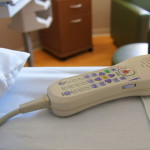Towards the end of last month the Government downgraded Coronavirus Covid-19 from being a High Consequence Infectious Disease (HCID).
Since then OnTheWight has had many readers get in touch, some worried that the seriousness of the virus would now be ‘downplayed’, whilst others asked why we needed lock down if the virus was no longer considered “a high consequence infectious disease”.
Downgrading doesn’t reduce C19 seriousness
By the Government no longer classing Covid-19 as an HCID does not mean it isn’t dangerous or serious – it’s just that it no longer meets the closely-defined criteria for an HCID.
The measures taken to introduce social distancing and self isolation have been carefully considered at a population level.
It’s “a technical classification”
OnTheWight got in touch with the Department for Health a couple of weeks ago, explaining how the downgrading was being interpreted by some in the community and asking for an explanation in layman’s terms.
A DHSC spokesperson told OnTheWight,
“The entire government is wholly focussed on tackling this virus. HCID is a technical classification with no current implications on how the government is responding to the coronavirus outbreak.
“We have always said we will take the right measures at the right time – based on the latest scientific evidence – to slow the spread of the virus, protect vulnerable people, reduce demand on our NHS and save lives.”
Background
The Government stated:
As of 19 March 2020, COVID-19 is no longer considered to be a high consequence infectious diseases (HCID) in the UK.
The 4 nations public health HCID group made an interim recommendation in January 2020 to classify COVID-19 as an HCID. This was based on consideration of the UK HCID criteria about the virus and the disease with information available during the early stages of the outbreak.
The statement goes on to explain that Covid-19 no longer meets all the criteria, given that among other things, there is now “greater clinical awareness” and a specific laboratory test.
Other considerations
The Government spokesperson went on to explain:
- HCID is partly based on individual risk. The decision to introduce our social distancing measures such as closing pubs, restaurants and other businesses is an epidemiological one – based on the virus’ activities at a population level and not the individual level.
- The four nations public health HCID group made an interim recommendation in January 2020 to classify COVID-19 as an HCID. This was based on consideration of the UK HCID criteria about the virus and the disease with information available during the early stages of the outbreak.
- Now that more is known about COVID-19, the public health bodies in the UK have reviewed the most up to date information about COVID-19 against the UK HCID criteria. They have determined that several features have now changed; in particular, more information is available about mortality rates (low overall), and there is now greater clinical awareness and a specific and sensitive laboratory test, the availability of which continues to increase.
- The Advisory Committee on Dangerous Pathogens (ACDP) is also of the opinion that COVID-19 should no longer be classified as an HCID.
- The need to have a national, coordinated response remains.
- In the UK, a high consequence infectious disease (HCID) is defined according to the following criteria:
– acute infectious disease
– typically has a high case-fatality rate
– may not have effective prophylaxis or treatment
– often difficult to recognise and detect rapidly
– ability to spread in the community and within healthcare settings
– requires an enhanced individual, population and system response to ensure it is managed effectively, efficiently and safely
Government Covid-19 guidance: Stay alert and stay safe
Wash your hands thoroughly and frequently (video tips).
Social distancing
It is recommended that you maintain at least a two metre gap (about 6.5ft) from people who are not from your household.
Seeking advice
Use the NHS 111 online coronavirus service that can tell if you need medical help and advise you what to do.
Image: Vincent Ghilione under CC BY 2.0





